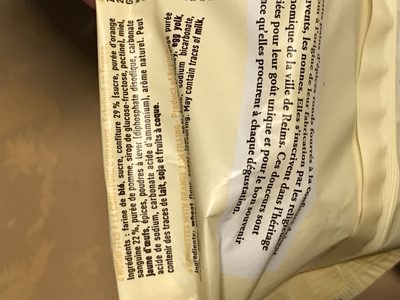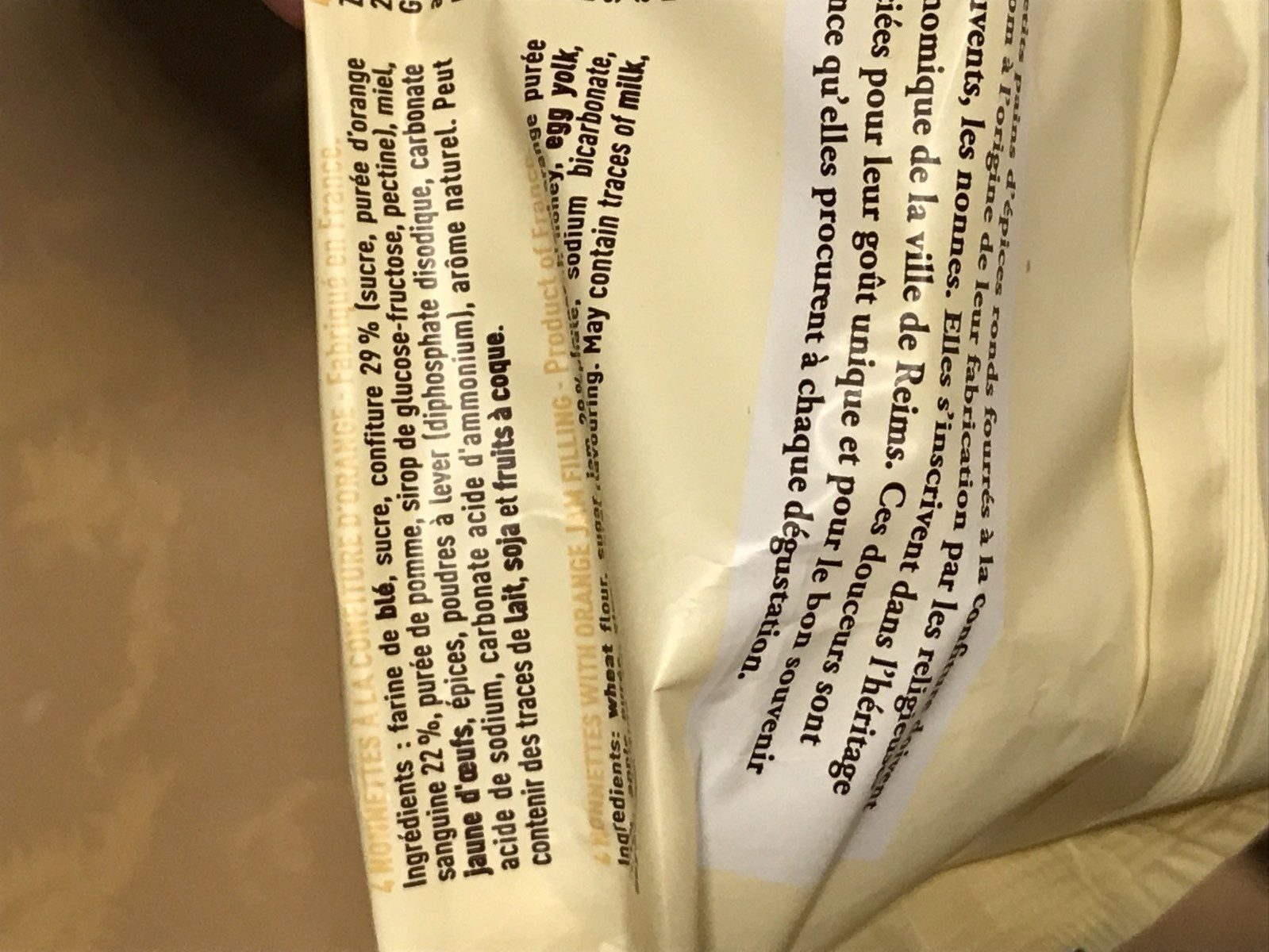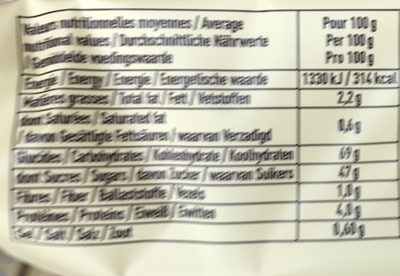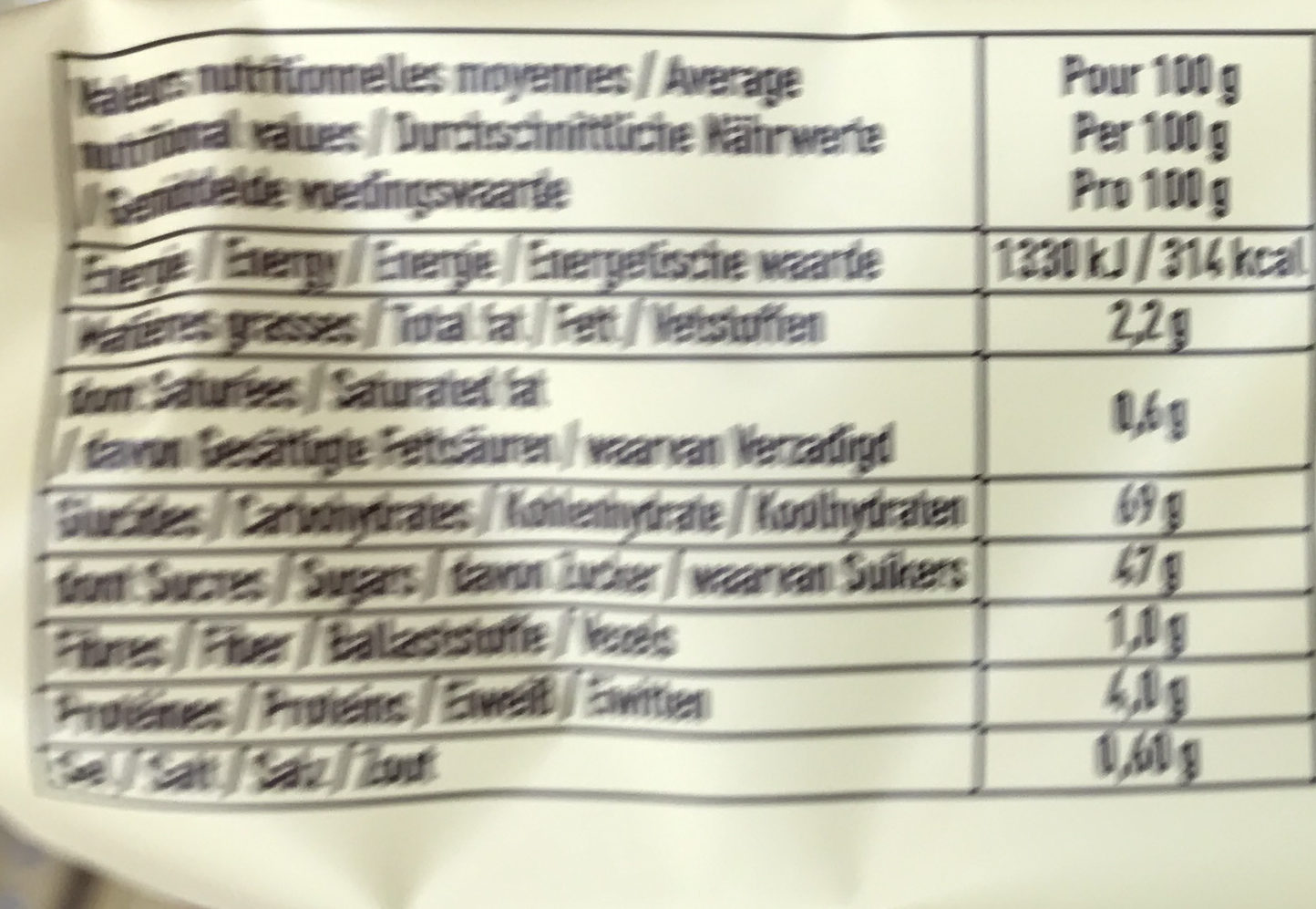Nonnettes coeur fondant à l'orange - Fossier - 130 g
This product page is not complete. You can help to complete it by editing it and adding more data from the photos we have, or by taking more photos using the app for Android or iPhone/iPad. Thank you!
×
Barcode: 3435070118220 (EAN / EAN-13)
Quantity: 130 g
Packaging: Plastic
Brands: Fossier
Categories: Snacks, Desserts, Sweet snacks, Biscuits and cakes, Cakes, Filled cakes, fr:Nonnettes
Labels, certifications, awards: Made in France, fr:Entrepreneurs + Engagés
Manufacturing or processing places: France
Stores: Carrefour
Countries where sold: France
Matching with your preferences
Environment
Packaging
Transportation
Report a problem
Data sources
Product added on by tacite
Last edit of product page on by roboto-app.
Product page also edited by kiliweb, openfoodfacts-contributors, packbot, quechoisir, sebleouf, yuka.R0tZY0YvOHZ1UDA3b3NabjJSUDd5UFlwNExLWGUyZTlDdW9NSWc9PQ.











